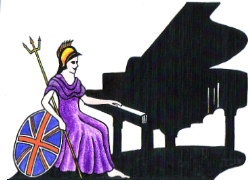We will say you wish to be included in the Teacher section. Go to the Teachers section you and will see...
Piano Teachers 'Add a listing here’
Browsing Piano Teachers
Click on the add a listing here; it’s the same for most listing categories
First you will see

*Fill in the first part this is for Admin use, some parts are required
once you have done that bit the next page will load.
My Account

Choose a Green button Free or Paid listing. Click it
The next page is…

You now need to add your details....
Title:* (required )
Friendly url (the system will add this for you )
Logo: ( you may add a logo or photo of yourself here )
Categories: (you can be in 3 different categories you need an order for each listing in each categories)
Short Description: (this will show just under your name in the main listings )
Description: (Get creative! this is your main advert there is an HTML editor to help you add colour. Paid listing can add photos here as well )
Keywords: ( this is important these are used when visitors search the site so your name, services and any extra towns you cover they must be in a list one word per line)
META Title: ( this is very important it is what will show in the search engines so your Title:* may be Sam Smith but here you could have ‘Sam Smith Piano Teacher in Mansfield ‘
)
META Description: ( this is important it’s the words that show in Google under your title if you leave this blank Google will pick the words and you may not like what it picks)
META Keywords: ( same as the Keywords above but the search engines use them and you need a comer after each one)
Hours: ( your opening hours !)
Phone:
Mobile:
Address 1 and 2 (up to you if you want to show your full address)
Location:* (this is required one town at the moment )
PostCode: (you will need this if you want a map to show )
Longitude and Lat: (will be added by the system if your postcode in the post ode section )
Website: (Your website if you have one )
Email; ( if you don’t want visitors to contact you by email then remove it )
Social Medea
( if you have the put them in you just need the last part)
Disclosure and Barring Service: Click yes or no
Qualifications: ( only compulsory for teachers)
Then Click submit
You will then see Listing submitted. Your listing will be reviewed for appropriate content and will be activated shortly. If you are a Teacher, Accompanists or Entertainer you may add a second order Once approved you can click on ‘Order’s in your admin area, then click on Manage listing from there you can add events to the primary site calendar add classifieds and see your stats.

